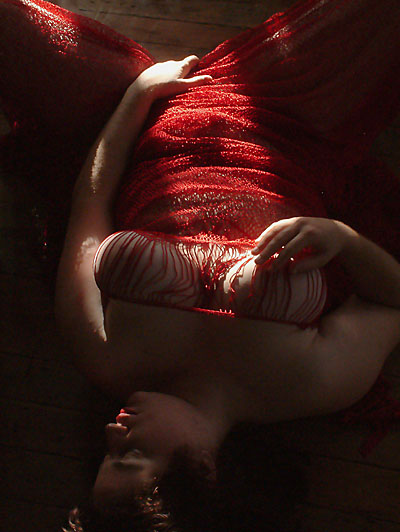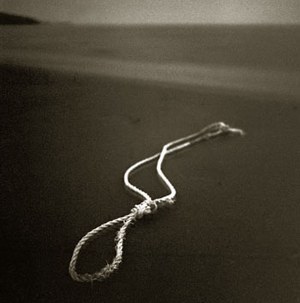 It started out in a tiny basement room!
It started out in a tiny basement room!In a room so small, when I closed the door and curtain tight (to keep the light out, see), the chemicals in tanks and trays for making prints and develop films changed temperature so radically and quick the films were much grainier than they needed to be and the prints took on a cast of gray. It was not pretty but it was a start...
In my short sweet life I have witnessed incredible refinements in the production of photographs. Digital photography has made the smelly, messy chemicals that went bad in days completely obsolete. You can 'develop' digital prints with the air conditioner broken at an indoor temperature of 102 degrees, it makes no difference! You do not need to put a darkroom in, no safe lights, no curtains, no trays and tongs or tanks for films. Everything glides quiet as a whisper from your camera through the computer into the printer until you have prints of whatever size you like, crisp as autumn leaves and bright as sunlight.
 So much for technical improvements! Well, almost so. The other thing about digital photography is the incredible advances in photographic resolution it has introduced. When I took the first really high-resolution digital camera into my hands and compared the results it produced with the photos I had taken for years on end with my prize analogue camera, I was able to understand why the photographers had all dragged their Leica cameras to the photography stores to sell at ridiculously low prices. It is like the difference between a horse and buggy and a formula one racing car!
So much for technical improvements! Well, almost so. The other thing about digital photography is the incredible advances in photographic resolution it has introduced. When I took the first really high-resolution digital camera into my hands and compared the results it produced with the photos I had taken for years on end with my prize analogue camera, I was able to understand why the photographers had all dragged their Leica cameras to the photography stores to sell at ridiculously low prices. It is like the difference between a horse and buggy and a formula one racing car!
All right, we have a digital photo of a building in front of us on the table. It is high-resolution, which means you can see every pimple on the cement wall, and the texture of the linen curtains in the window is incredibly clear. The question is, is the photo of Frank Lloyd Wright's Robie House a work art? Most certainly the house is but what about the photo?
It depends completely on the photo. The snapshot, taken from a tour bus with a cell-phone camera is most likely nothing of the kind. A photo badly taken with the best camera in the world is no art work either! Out of balance, using the wrong program, a photo taken using a focal length that distorts the vertical lines of the house, the photo taken using the world's finest camera turns out to be more a distortion of the Robie House than it is anything else.
"Art criticism is to artists what ornithology is to the birds," means art is a free expression; what is more, the canons of taste, 'rules of art' cannot define art since rules cannot define freedom.
To tackle the question, "why is photography considered an art," is to define photography's freedom. The subject matter, what a photo shows -- a building, a person, a prairie, is nothing free. A photo of you washing the dishes is a photo of a person who is subject to the laws of biology doing dishes that are each subject to the laws of physics. If the soap makes it slip, the dish you let fall to the floor will probably break. The operation of the camera is subject to the laws of physics too. Refraction, light, the operation of the camera's sensors are all finely calculated and worked out precisely according to these laws.
What is free in the photo of you doing dishes is neither you, who will age and die, the camera that sooner or later will break, and the dishes, ditto. What is free in a photo is the observation and therefore, the observer.
Let us consider the whole domain of commercial photography for a moment. The cover photo of nude Demi Moore, a highlight of her rounded belly pregnant with child was a great commercial success. Clean, essentially framed, spotless, well-crafted the photo is no work of art because the spectator, the observer of the photo, is as pre-planned as everything in and about the photo is. The observer's relation to the picture and the star whose belly it is are elements that are as strictly defined as the photo itself is. "Wow, Demi Moore, a film star, belly right out there, rounded, pregnant, a famous woman, what am I to say, look, see?"
 The photo, on the other hand, which Henri-Cartier-Bresson took of a pedestrian mid-stride springing over a mud puddle, one shoe touching ground as delicately as possible in a place carefully pre-planned, it is plain the man shot in silhouette is trying to minimize contact with the water, is doing his best not to get wet. Although everyone can related to Demi Moore's belly as an observer in whatever fashion they relate to fil
The photo, on the other hand, which Henri-Cartier-Bresson took of a pedestrian mid-stride springing over a mud puddle, one shoe touching ground as delicately as possible in a place carefully pre-planned, it is plain the man shot in silhouette is trying to minimize contact with the water, is doing his best not to get wet. Although everyone can related to Demi Moore's belly as an observer in whatever fashion they relate to fil
to The reason I have called the photos I love "Moveable Visions" is because they do not simply contain a person, some object or design, abstract or real, they are moveable because they include the people who look at them. It is the people who move with photos that capture their interest. The object seen includes the viewer, includes the subject who is no part of the image and yet is included in it.













No comments:
Post a Comment